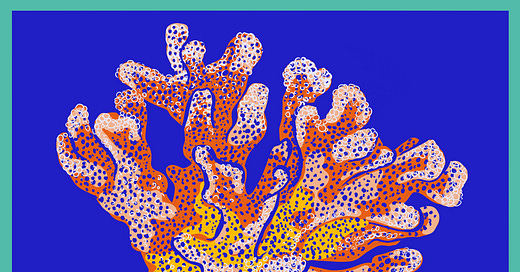From icebergs to oceans, protect nature so it can protect itself
Here's your Ours to Save newsletter for the week beginning 2nd August.
🌏 Thanks for signing up to support small, purpose-driven media. Next week, we’ll be digging into mycology, ecosomatics, and other big words! 🌏
Why we need marine protected areas 🦀
Our oceans already sequester 2.8B tonnes of carbon per year. It’s time to kickstart a cycle of conservation, protecting them so they can protect themselves and the planet in turn.
From coral reefs to mangroves, kelp forests to coastal habitats, we need marine environments more than ever. The ocean is a great asset when it comes to climate change mitigation; it currently sequesters around 2.8 billion tonnes of carbon every year. But this sequestration relies on functioning ecosystems, with high biodiversity and expansive, healthy habitats.
Marine biodiversity is, however, rapidly diminishing as a result of human development. The primary human stressors include overfishing, climate change, shipping and pollution. In order to reduce these stressors, a bid has been made to protect 30% of the ocean by 2030, through the creation of marine protected areas (MPAs).
How changes in the Arctic precipitated this summer's extreme weather ❄️
There are clear links between the flooding and heatwaves of the past few months and goings-on in the Arctic region.
Weird weather we’re having, right? From heatwaves in Oregon, Washington and British Columbia, to Finland’s highest ever June temperatures, to two months worth of rain hitting western Germany in two days, the Northern Hemisphere is getting a taste of what’s to come. One of the key takeaways ought to be that, on planet Earth, everything is connected.
Right in the middle of it all is the Arctic. It is climate change ground-zero, says a new report from the Climate Crisis Advisory Group. Incidents there reverberate to alter global weather patterns. On the flip side, solutions implemented in the Arctic - such as refreezing via white cloud cover over the Arctic Sea – could have a hefty positive impact. But, for now, why the Arctic domino effect?



